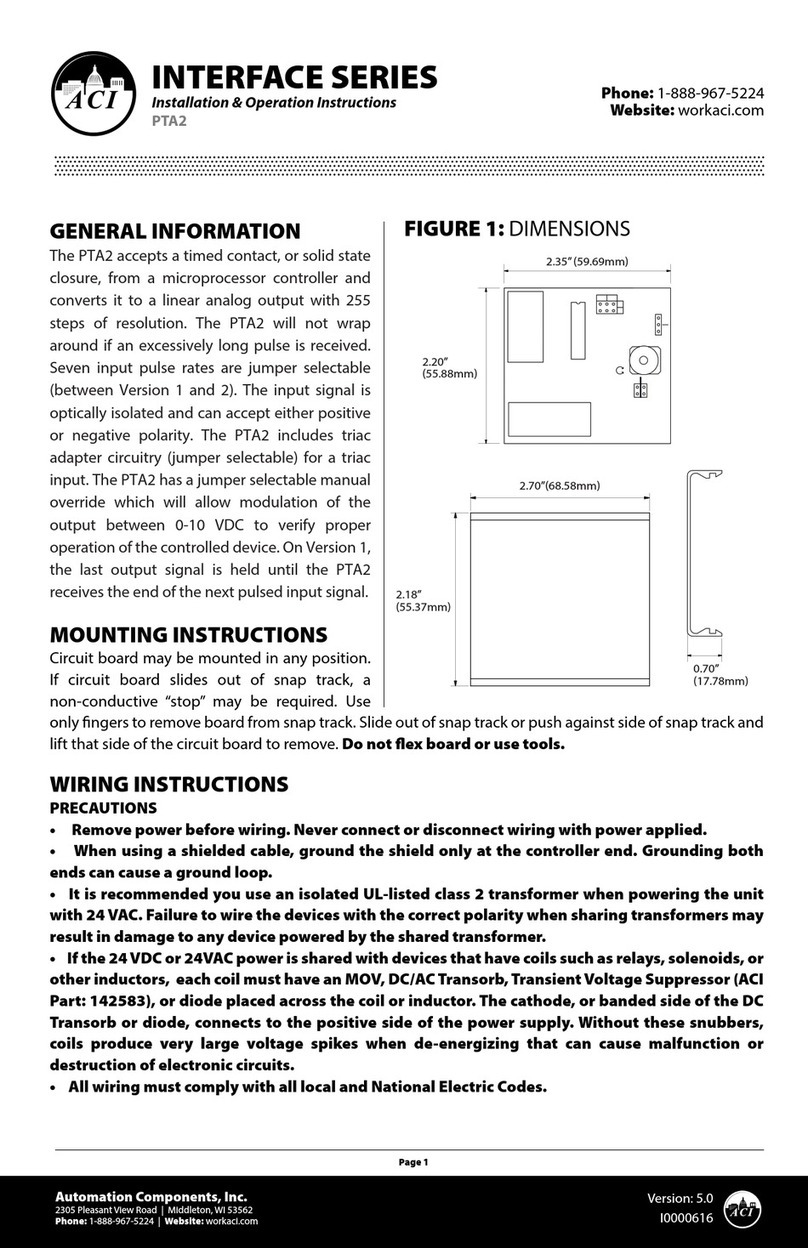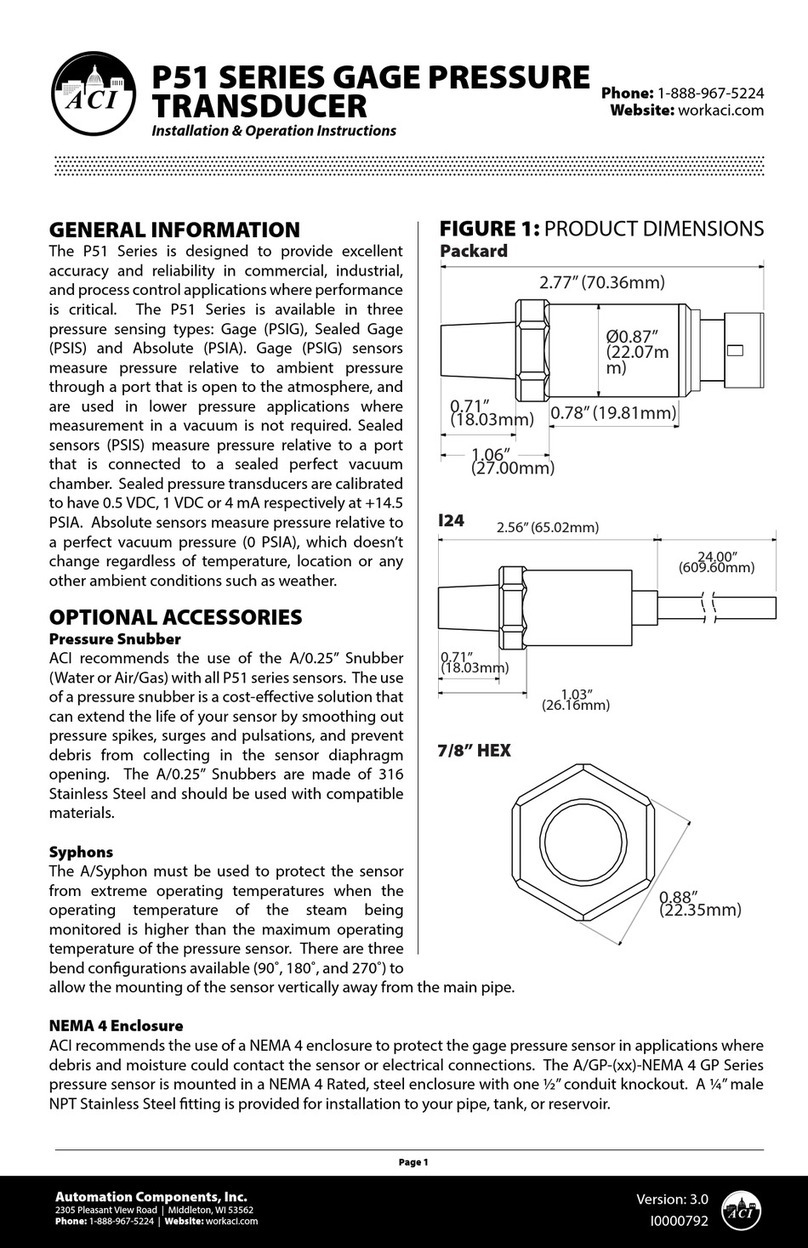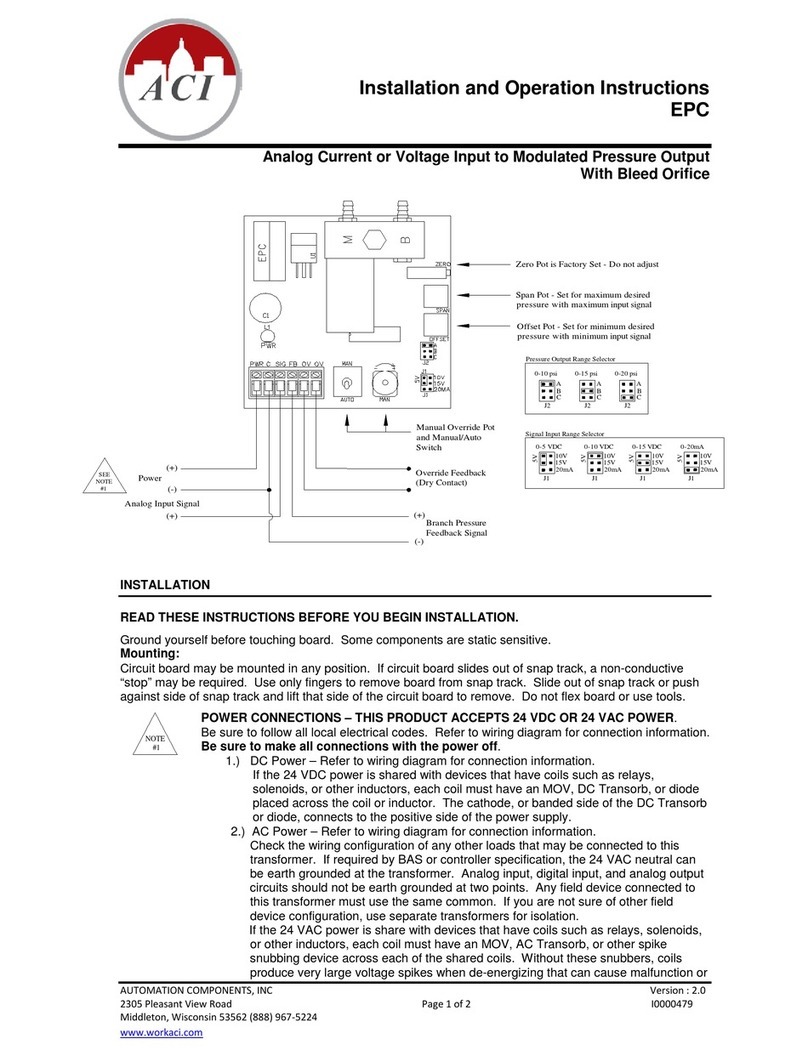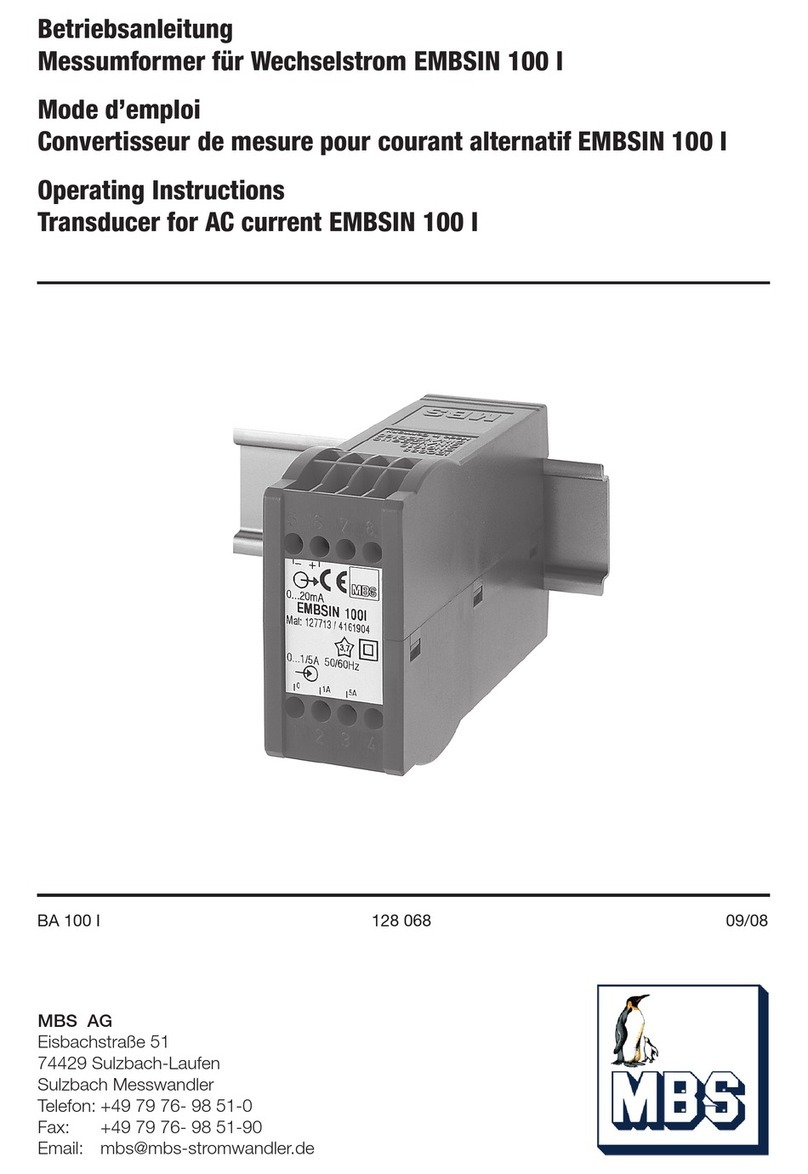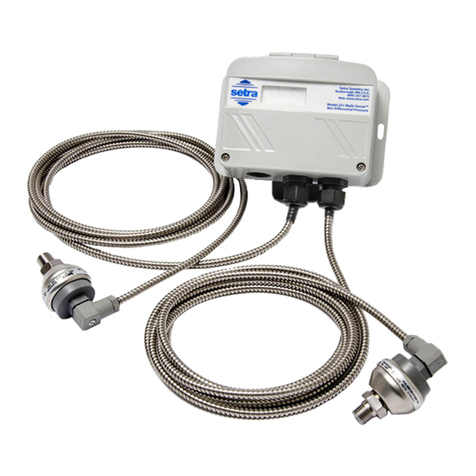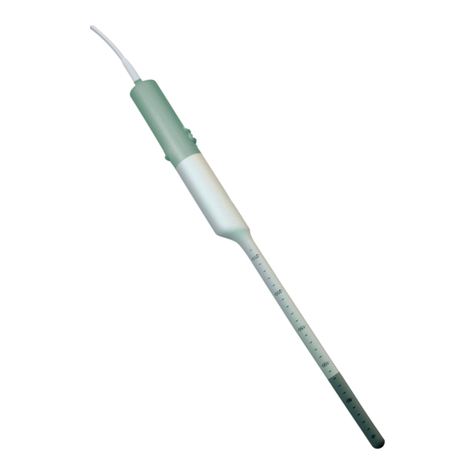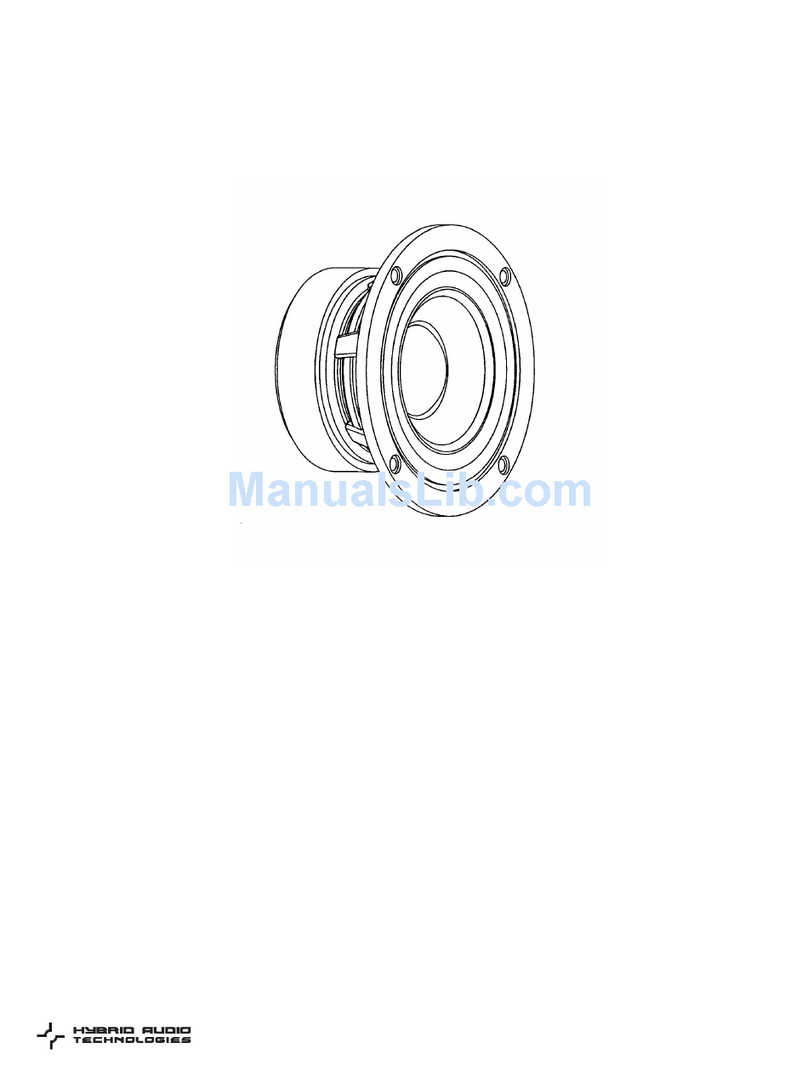aci ACCESS series Installation instructions

Automation Components, Inc.
2305 Pleasant View Road | Middleton, WI 53562
Phone: 1-888-967-5224 | Website: workaci.com
Page 1
Version: 4.0
I0000599
FIGURE 1: DIMENSIONS
INTERFACE SERIES
Installation & Operation Instructions
PXP2.3, PXP2.3FS, PXP2.3LG
Phone: 1-888-967-5224
Website: workaci.com
GENERAL INFORMATION
The PXP2.3 is an electric to pneumatic transducer which
converts an analog electrical input signal to a
proportional pneumatic output. The PXP2.3 will
automatically modulate its control valve(s) to regulate
the branch line pressure to the selected set point as
determined by the input signal. The PXP2.3 oers four
selectable input ranges which convert to a 0 to 15 psig
modulating output (See EPC product for 0 to 20 psig
outputs). A 0-5 VDC feedback signal indicating the
resultant branch line pressure is also provided. This
signal varies linearly with branch pressure (0 volts= 0
psig, 5 volts = 15 psig). The PXP2.3 incorporates two
valves and does not use air at set point. It’s branch
exhaust ow and response time are not limited by an
internal restrictor and are similar to its load rate. If power
fails to the PXP2.3, branch line pressure remains
constant if the branch line does not leak air. The
PXP2.3FS is equipped with a N.O. branch exhaust valve
which allows exhaust of branch air on power failure. A
manual override (jumper selectable), which controls the
output pressure, is provided for setup and
troubleshooting.
MOUNTING INSTRUCTIONS
Circuit board may be mounted in any position. If
circuit board slides out of snap track, a
non-conductive “stop” may be required. Use only
ngers to remove board from snap track. Slide
out of snap track or push against side of snap
track and lift that side of the circuit board to
remove. Do not flex board or use tools.
WIRING INSTRUCTIONS
PRECAUTIONS
• Remove power before wiring. Never
connect or disconnect wiring with power
applied.
• When using a shielded cable, ground the
shield only at the controller end. Grounding
both ends can cause a ground loop.
• It is recommended you use an isolated
UL-listed class 2 transformer when powering
the unit with 24 VAC. Failure to wire the
devices with the correct polarity when
3.25” (82.55mm)
2.18”
(55.37mm)
PXP
0.70”
(17.78mm)
2.18”
(55.37mm)
2.70”(68.58mm)
PXP With Gauge
3.65” (92.71mm)
2.70” (68.58mm)
2.20”
(55.92mm)
Ø1.64”
(41.66mm)
2.95” (74.90mm)
WIRING INSTRUCTIONS
(CONTINUED)
sharing transformers may result in damage to any
device powered by the shared transformer.
• If the 24 VDC or 24VAC power is shared with
devices that have coils such as relays, solenoids, or
other inductors, each coil must have an MOV,
DC/AC Transorb, Transient Voltage Suppressor
(ACI Part: 142583), or diode placed across the coil
or inductor. The cathode, or banded side of the DC
Transorb or diode, connects to the positive side of
the power supply. Without these snubbers, coils
produce very large voltage spikes when
de-energizing that can cause malfunction or
destruction of electronic circuits.
• All wiring must comply with all local and
National Electric Codes.
The gauge port will accept a miniature 1/8”-27 FNPT back-ported pressure gauge to allow direct reading of
branch line pressure. The gauge should be sealed by Teon sealing tape, and should be tightened just
snug, using a backup wrench to hold the manifold. ADJUSTMENT OF INSTALLED GAUGES. If installation
requires adjustment of the gauge for proper reading of the face, turn the gauge no more than ½ turn in
either direction. O-rings in the bottom of the gauge port will allow this without leakage.
Warranty does not include malfunction due to clogged valve. Main air port is ltered with the supplied 80
– 100 micron integral-in-barb lter (except for the PXP2.3LG model). Periodically check the lter for
contamination and ow reduction. Replace if needed (Part # PN004).
The surface between the manifold and pressure transducer is a pressure seal. Minimize stress between the
circuit board and the manifold by holding the manifold in one hand while installing pneumatic tubing
onto the ttings, and use care when removing tubing to avoid damaging ttings or moving manifold.
This unit requires at least two cubic inches (minimum) of branch air line capacity to operate without
oscillation. Do not operate without main air supplied.
CHECKOUT
Select one of the four input signal combinations by moving the jumper shunt as shown in “Input Signal
Selector”.
Verify the MAN/AUTO jumper shunts are in the AUTO position (jumper over center pin and AUTO pin). In
AUTO, the manual override pot is inactive and the analog input signal is supplying the set-point. When in
the MAN position, the manual override pot in supplying the set point and the analog input signal is locked
out. Use a small bladed screwdriver to increase or decrease the pneumatic output.
Supply power and the LED power indicator
will light, but only measurement will verify
proper voltage. Apply minimum and
maximum input signals and measure
response. Response between the minimum
and maximum values will be linear,
therefore software algorithms are easy to
derive.
The feedback signal range on all selections is
0 to 5 VDC and is proportional to the output
pressure range of 0 – 15 psig.
The output and feedback signal will
continue to vary proportionally if the input
signal is increased beyond its upper limit (if
there is enough main air available).
However, do not exceed the listed maximum
input signal voltage by more than 25%.
The PXP2.3 incorporates two valves and is
not a constant bleed controller. Its branch
exhaust ow and response time is not limited by any internal restrictor and is similar to its load rate. The
PXP2.3 is ideal for long branch line runs, multiple actuators, and outside air dampers because of it’s 750
scim capacity.
Note: If power to the PXP2.3 is lost, it will maintain branch line pressure (assuming no branch line leaks). If
power to the PXP2.3FS (Fail-Safe) is lost, the branch line control valve will open and branch line pressure
will go to 0 psig.

FIGURE 3: SHUNT SWITCHES
FIGURE 2: WIRING
Automation Components, Inc.
2305 Pleasant View Road | Middleton, WI 53562
Phone: 1-888-967-5224 | Website: workaci.com
Page 2
Version: 4.0
I0000599
GENERAL INFORMATION
The PXP2.3 is an electric to pneumatic transducer which
converts an analog electrical input signal to a
proportional pneumatic output. The PXP2.3 will
automatically modulate its control valve(s) to regulate
the branch line pressure to the selected set point as
determined by the input signal. The PXP2.3 oers four
selectable input ranges which convert to a 0 to 15 psig
modulating output (See EPC product for 0 to 20 psig
outputs). A 0-5 VDC feedback signal indicating the
resultant branch line pressure is also provided. This
signal varies linearly with branch pressure (0 volts= 0
psig, 5 volts = 15 psig). The PXP2.3 incorporates two
valves and does not use air at set point. It’s branch
exhaust ow and response time are not limited by an
internal restrictor and are similar to its load rate. If power
fails to the PXP2.3, branch line pressure remains
constant if the branch line does not leak air. The
PXP2.3FS is equipped with a N.O. branch exhaust valve
which allows exhaust of branch air on power failure. A
manual override (jumper selectable), which controls the
output pressure, is provided for setup and
troubleshooting.
MOUNTING INSTRUCTIONS
Circuit board may be mounted in any position. If
circuit board slides out of snap track, a
non-conductive “stop” may be required. Use only
ngers to remove board from snap track. Slide
out of snap track or push against side of snap
track and lift that side of the circuit board to
remove. Do not flex board or use tools.
WIRING INSTRUCTIONS
PRECAUTIONS
• Remove power before wiring. Never
connect or disconnect wiring with power
applied.
• When using a shielded cable, ground the
shield only at the controller end. Grounding
both ends can cause a ground loop.
• It is recommended you use an isolated
UL-listed class 2 transformer when powering
the unit with 24 VAC. Failure to wire the
devices with the correct polarity when
WIRING INSTRUCTIONS
(CONTINUED)
sharing transformers may result in damage to any
device powered by the shared transformer.
• If the 24 VDC or 24VAC power is shared with
devices that have coils such as relays, solenoids, or
other inductors, each coil must have an MOV,
DC/AC Transorb, Transient Voltage Suppressor
(ACI Part: 142583), or diode placed across the coil
or inductor. The cathode, or banded side of the DC
Transorb or diode, connects to the positive side of
the power supply. Without these snubbers, coils
produce very large voltage spikes when
de-energizing that can cause malfunction or
destruction of electronic circuits.
• All wiring must comply with all local and
National Electric Codes.
The gauge port will accept a miniature 1/8”-27 FNPT back-ported pressure gauge to allow direct reading of
branch line pressure. The gauge should be sealed by Teon sealing tape, and should be tightened just
snug, using a backup wrench to hold the manifold. ADJUSTMENT OF INSTALLED GAUGES. If installation
requires adjustment of the gauge for proper reading of the face, turn the gauge no more than ½ turn in
either direction. O-rings in the bottom of the gauge port will allow this without leakage.
Warranty does not include malfunction due to clogged valve. Main air port is ltered with the supplied 80
– 100 micron integral-in-barb lter (except for the PXP2.3LG model). Periodically check the lter for
contamination and ow reduction. Replace if needed (Part # PN004).
The surface between the manifold and pressure transducer is a pressure seal. Minimize stress between the
circuit board and the manifold by holding the manifold in one hand while installing pneumatic tubing
onto the ttings, and use care when removing tubing to avoid damaging ttings or moving manifold.
This unit requires at least two cubic inches (minimum) of branch air line capacity to operate without
oscillation. Do not operate without main air supplied.
PWR
L1
Man Auto
J2 J1
10V
15V
20mA
5V
PWR CSIG FB
MAIN
BRANCH
Span
Zero
80 - 100 Micron
Filter in Barb
Selector for
Manual Override
24VAC/DC
Power Supply
Manual
Override
Pot
Analog
Signal
Input
(+) (+)
(+)
(-) (-)
(-)
CHECKOUT
Select one of the four input signal combinations by moving the jumper shunt as shown in “Input Signal
Selector”.
Verify the MAN/AUTO jumper shunts are in the AUTO position (jumper over center pin and AUTO pin). In
AUTO, the manual override pot is inactive and the analog input signal is supplying the set-point. When in
the MAN position, the manual override pot in supplying the set point and the analog input signal is locked
out. Use a small bladed screwdriver to increase or decrease the pneumatic output.
Supply power and the LED power indicator
will light, but only measurement will verify
proper voltage. Apply minimum and
maximum input signals and measure
response. Response between the minimum
and maximum values will be linear,
therefore software algorithms are easy to
derive.
The feedback signal range on all selections is
0 to 5 VDC and is proportional to the output
pressure range of 0 – 15 psig.
The output and feedback signal will
continue to vary proportionally if the input
signal is increased beyond its upper limit (if
there is enough main air available).
However, do not exceed the listed maximum
input signal voltage by more than 25%.
The PXP2.3 incorporates two valves and is
not a constant bleed controller. Its branch
exhaust ow and response time is not limited by any internal restrictor and is similar to its load rate. The
PXP2.3 is ideal for long branch line runs, multiple actuators, and outside air dampers because of it’s 750
scim capacity.
Note: If power to the PXP2.3 is lost, it will maintain branch line pressure (assuming no branch line leaks). If
power to the PXP2.3FS (Fail-Safe) is lost, the branch line control valve will open and branch line pressure
will go to 0 psig.
J1
0-20mA
J1
0-10V
J1
0-15V
J1
0-5V
INPUT SIGNAL SELECTOR
J1 SHUNT POSITIONS
Branch Pressure
Feedback Output
Blue Manifold for Failsafe Model

FIGURE 4: PNEUMATIC TUBING
INSTALLATION
GENERAL INFORMATION
The PXP2.3 is an electric to pneumatic transducer which
converts an analog electrical input signal to a
proportional pneumatic output. The PXP2.3 will
automatically modulate its control valve(s) to regulate
the branch line pressure to the selected set point as
determined by the input signal. The PXP2.3 oers four
selectable input ranges which convert to a 0 to 15 psig
modulating output (See EPC product for 0 to 20 psig
outputs). A 0-5 VDC feedback signal indicating the
resultant branch line pressure is also provided. This
signal varies linearly with branch pressure (0 volts= 0
psig, 5 volts = 15 psig). The PXP2.3 incorporates two
valves and does not use air at set point. It’s branch
exhaust ow and response time are not limited by an
internal restrictor and are similar to its load rate. If power
fails to the PXP2.3, branch line pressure remains
constant if the branch line does not leak air. The
PXP2.3FS is equipped with a N.O. branch exhaust valve
which allows exhaust of branch air on power failure. A
manual override (jumper selectable), which controls the
output pressure, is provided for setup and
troubleshooting.
MOUNTING INSTRUCTIONS
Circuit board may be mounted in any position. If
circuit board slides out of snap track, a
non-conductive “stop” may be required. Use only
ngers to remove board from snap track. Slide
out of snap track or push against side of snap
track and lift that side of the circuit board to
remove. Do not flex board or use tools.
WIRING INSTRUCTIONS
PRECAUTIONS
• Remove power before wiring. Never
connect or disconnect wiring with power
applied.
• When using a shielded cable, ground the
shield only at the controller end. Grounding
both ends can cause a ground loop.
• It is recommended you use an isolated
UL-listed class 2 transformer when powering
the unit with 24 VAC. Failure to wire the
devices with the correct polarity when
WARRANTY
The PXP Series is covered by ACI’s Two (2) Year Limited Warranty, which is located in the front of ACI’S SENSORS &
TRANSMITTERS CATALOG or can be found on ACI’s website: www.workaci.com.
W.E.E.E. DIRECTIVE
At the end of their useful life the packaging and product should be disposed of via a suitable recycling
centre. Do not dispose of with household waste. Do not burn.
Automation Components, Inc.
2305 Pleasant View Road | Middleton, WI 53562
Phone: 1-888-967-5224 | Website: workaci.com
Page 3
Version: 4.0
I0000599
WIRING INSTRUCTIONS
(CONTINUED)
sharing transformers may result in damage to any
device powered by the shared transformer.
• If the 24 VDC or 24VAC power is shared with
devices that have coils such as relays, solenoids, or
other inductors, each coil must have an MOV,
DC/AC Transorb, Transient Voltage Suppressor
(ACI Part: 142583), or diode placed across the coil
or inductor. The cathode, or banded side of the DC
Transorb or diode, connects to the positive side of
the power supply. Without these snubbers, coils
produce very large voltage spikes when
de-energizing that can cause malfunction or
destruction of electronic circuits.
• All wiring must comply with all local and
National Electric Codes.
The gauge port will accept a miniature 1/8”-27 FNPT back-ported pressure gauge to allow direct reading of
branch line pressure. The gauge should be sealed by Teon sealing tape, and should be tightened just
snug, using a backup wrench to hold the manifold. ADJUSTMENT OF INSTALLED GAUGES. If installation
requires adjustment of the gauge for proper reading of the face, turn the gauge no more than ½ turn in
either direction. O-rings in the bottom of the gauge port will allow this without leakage.
Warranty does not include malfunction due to clogged valve. Main air port is ltered with the supplied 80
– 100 micron integral-in-barb lter (except for the PXP2.3LG model). Periodically check the lter for
contamination and ow reduction. Replace if needed (Part # PN004).
The surface between the manifold and pressure transducer is a pressure seal. Minimize stress between the
circuit board and the manifold by holding the manifold in one hand while installing pneumatic tubing
onto the ttings, and use care when removing tubing to avoid damaging ttings or moving manifold.
This unit requires at least two cubic inches (minimum) of branch air line capacity to operate without
oscillation. Do not operate without main air supplied.
Min Tubing Length:
25 ft [7.62 m]
CHECKOUT
Select one of the four input signal combinations by moving the jumper shunt as shown in “Input Signal
Selector”.
Verify the MAN/AUTO jumper shunts are in the AUTO position (jumper over center pin and AUTO pin). In
AUTO, the manual override pot is inactive and the analog input signal is supplying the set-point. When in
the MAN position, the manual override pot in supplying the set point and the analog input signal is locked
out. Use a small bladed screwdriver to increase or decrease the pneumatic output.
Supply power and the LED power indicator
will light, but only measurement will verify
proper voltage. Apply minimum and
maximum input signals and measure
response. Response between the minimum
and maximum values will be linear,
therefore software algorithms are easy to
derive.
The feedback signal range on all selections is
0 to 5 VDC and is proportional to the output
pressure range of 0 – 15 psig.
The output and feedback signal will
continue to vary proportionally if the input
signal is increased beyond its upper limit (if
there is enough main air available).
However, do not exceed the listed maximum
input signal voltage by more than 25%.
The PXP2.3 incorporates two valves and is
not a constant bleed controller. Its branch
exhaust ow and response time is not limited by any internal restrictor and is similar to its load rate. The
PXP2.3 is ideal for long branch line runs, multiple actuators, and outside air dampers because of it’s 750
scim capacity.
Note: If power to the PXP2.3 is lost, it will maintain branch line pressure (assuming no branch line leaks). If
power to the PXP2.3FS (Fail-Safe) is lost, the branch line control valve will open and branch line pressure
will go to 0 psig.
Air Compressor

PRODUCT SPECIFICATIONS
Automation Components, Inc.
2305 Pleasant View Road | Middleton, WI 53562
Phone: 1-888-967-5224 | Website: workaci.com
Page 4
Version: 4.0
I0000599
24 VAC (+/-10%), 50 or 60Hz, 24 VDC (+10%/- 5%)
160 mA maximum, 200 mA on fail safe models
0-5 VDC @ 10,000 | 0-10 VDC @ 10,000 | 0-15 VDC @ 10,000 | 0-20 mA @
250
0-5 VDC = Output Span
Field Calibration Possible: 0 to 15 psig (0-103.421 kPa) maximum
Maximum: 25 psig (172.369 kPa) | Minimum: 18 psig (124.106 kPa)
PXP2.3FS: 750 SCIM (12.29 Liters), 750 SCIM (12.29 Liters) | PXP2.3GFS: 750
SCIM (12.29 Liters), 750 SCIM (12.29 Liters) | PXP2.3LG: 1400 SCIM (22.94 Liters),
1400 SCIM (22.94 Liters)
1% full scale @ room temperature | 2% full scale across operating temperature
range
MAN function = output can be varied | AUTO function = output is controlled
from input signal
Supply valves @ 20 psig (138 kPa) main/15 psig (103 kPa) out, 750 scim (1400 on
LG model)
Branch Line requires 2 in or 33.78 cm (min.). Branch line min. of 25 feet of 1/4”
O.D poly tubing
Furnished with integral-in-barb 80-100 micron lter (Part # PN004) except for
PXP2LG which is furnished with external 5 micron in-line lter (PN021)
90° Pluggable Screw Terminal Blocks
16 (1.31 mm) to 26 AWG (0.129 mm)
0.5 Nm (Minimum); 0.6 Nm (Maximum)
1/4" O.D. nominal (1/8” I.D.) polyethylene
Removeable brass barbed ttings for Main and Branch in machined aluminum
manifold
Plugged 1/8-27-FNPT gauge port | Gauge installed at additional cost
0-30 psig (0-200 kPa)
35 to 120°F (1.7 to 48.9°C)
10 to 95% non-condensing
-20 to 150°F (-28.9 to 65.5°C)
NON-SPECIFIC INFORMATION
Supply Voltage:
Supply Current:
Input Signal Source (@
Impedance):
Feedback Signal Output Range:
Output Pressure Range:
Air Supply Pressure:
Air Consumption:
Output Pressure Accuracy:
Manual / Auto Override:
Air Flow:
Filtering:
Connections:
Wire Size:
Terminal Block Torque Rating:
Connections | Pneumatic
Tubing Size-Type:
Pneumatic Fitting:
Gauge Pressure Range (Gauge
Models):
Operating Temperature Range:
Operating Humidity Rage:
Storage Temperature:
Other manuals for ACCESS series
16
This manual suits for next models
4
Other aci Transducer manuals
Popular Transducer manuals by other brands

MKS
MKS HPS Products 999 Quattro Series Operation and maintenance manual
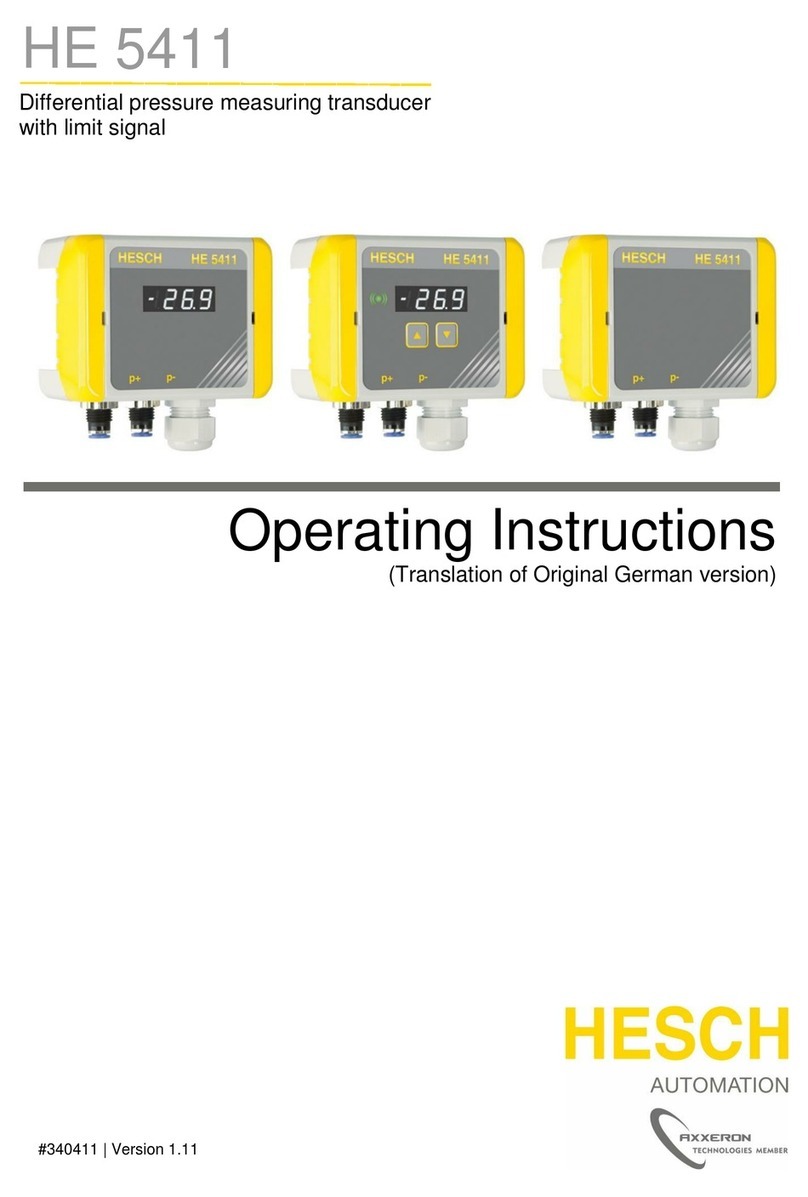
Axxeron
Axxeron HESCH HE 5411 operating instructions

BECKWITH ELECTRIC
BECKWITH ELECTRIC M-0214 Instruction book
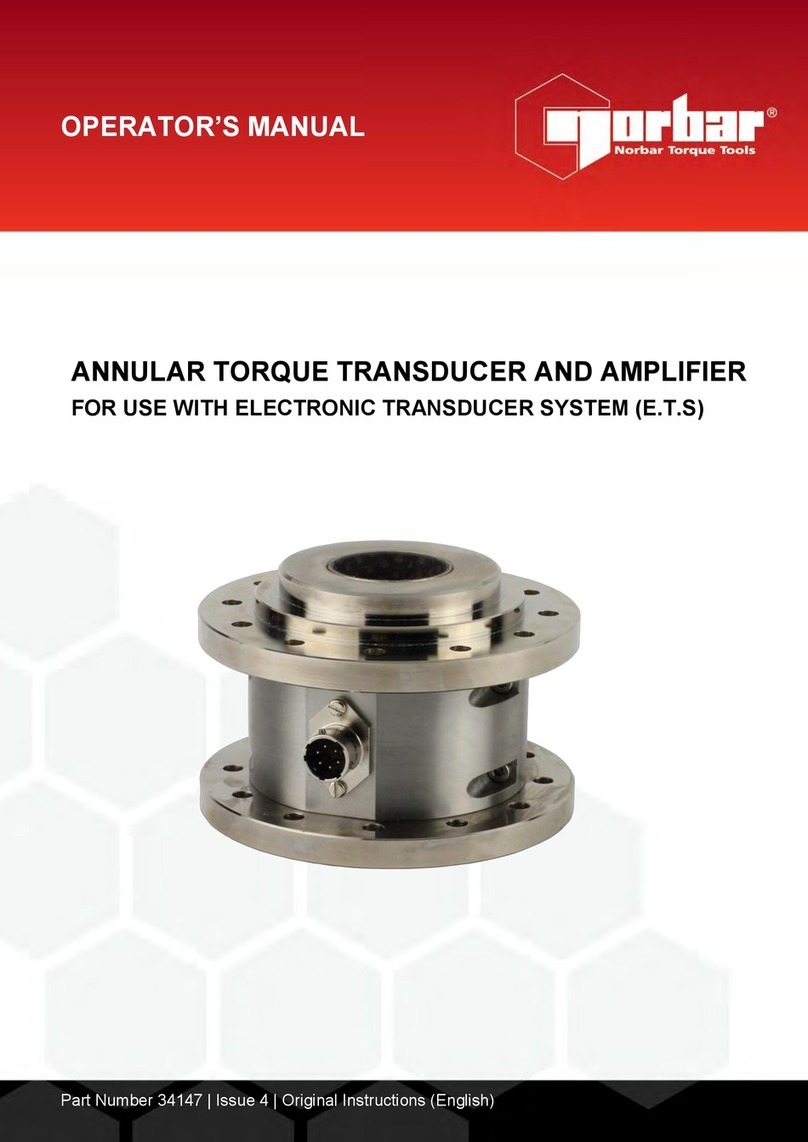
norbar
norbar PNEUTORQUE PT 1 Operator's manual
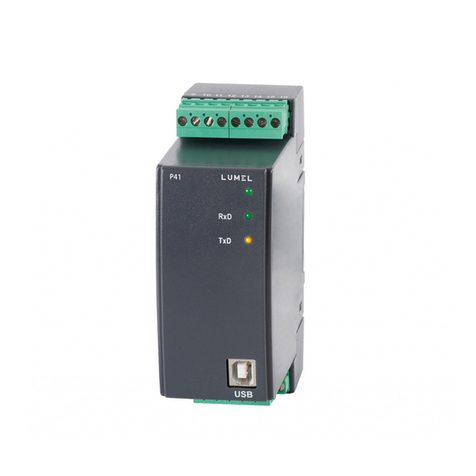
Lumel
Lumel P41 User Manual & Quick Start
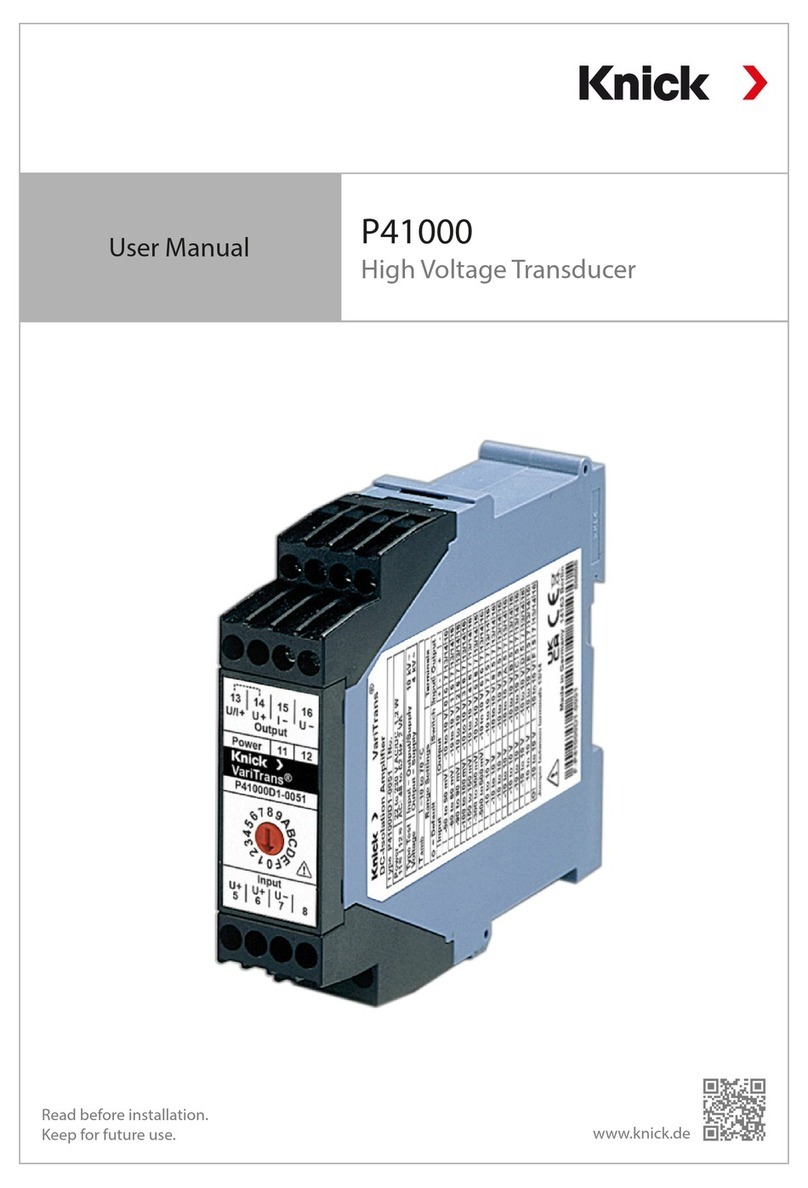
Knick
Knick VariTrans P 41000 Series user manual
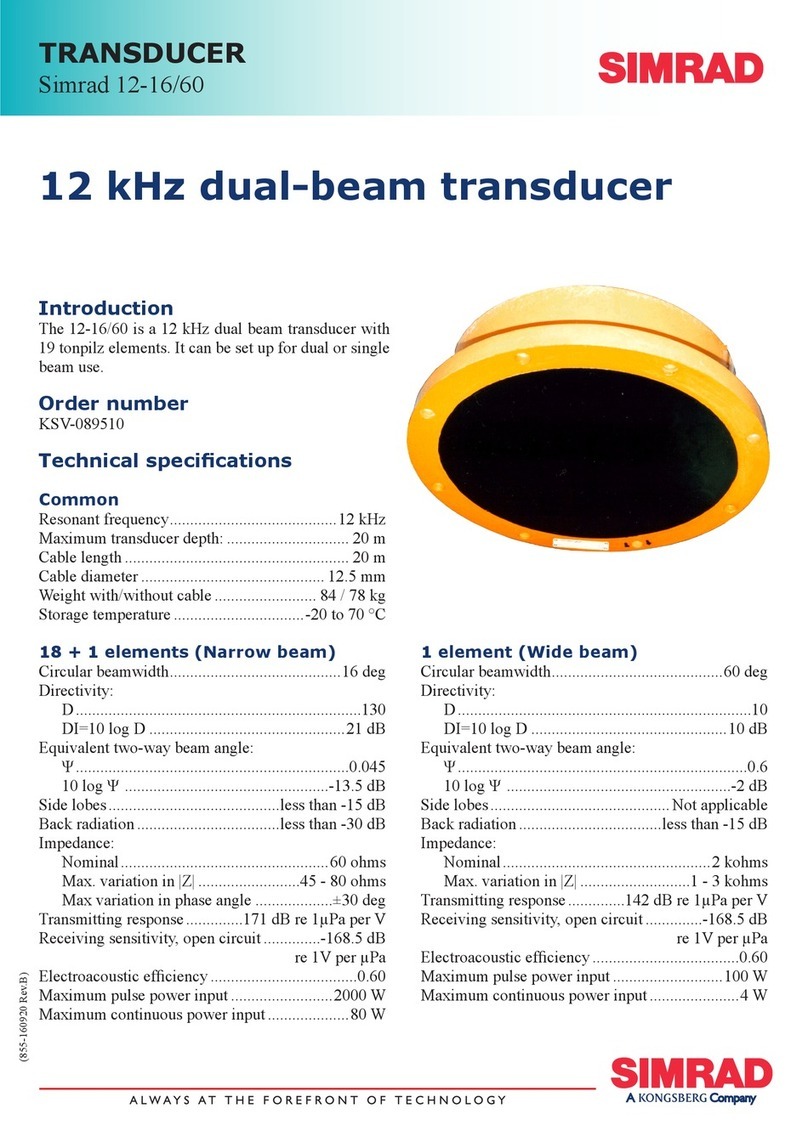
Simrad
Simrad 12-16/60 datasheet
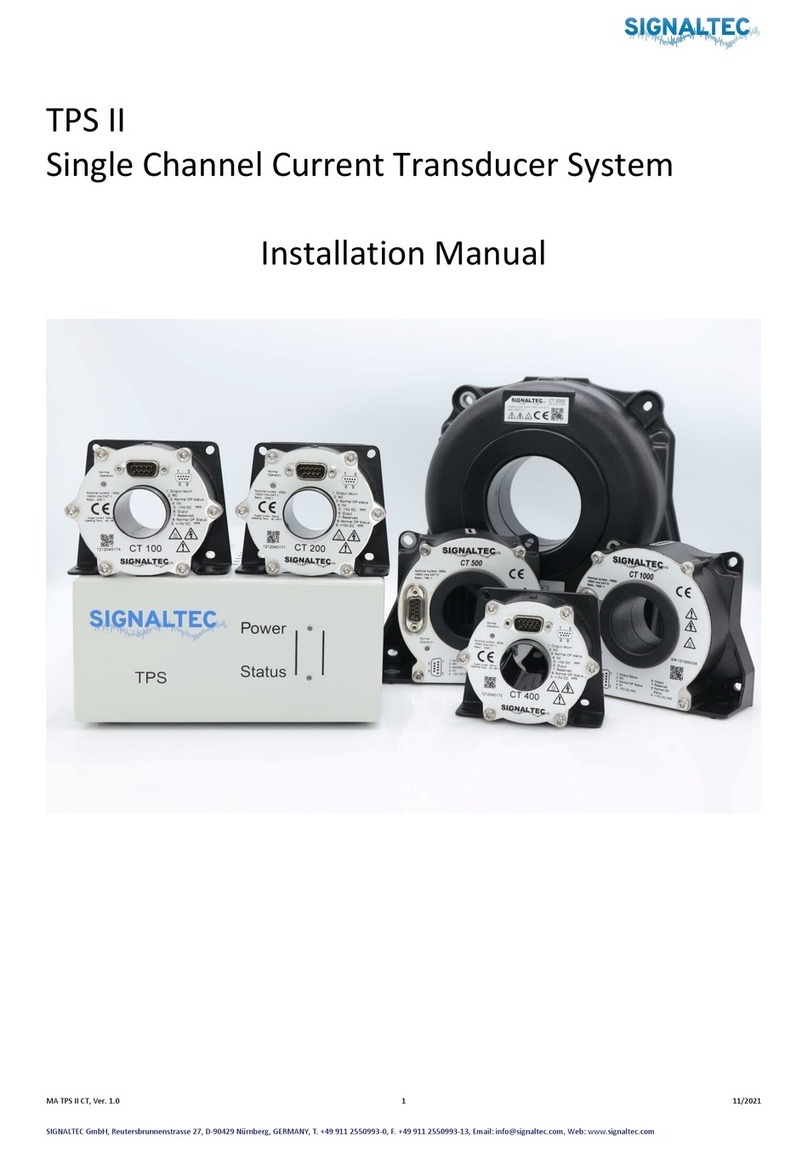
Signaltec
Signaltec TPS II installation manual
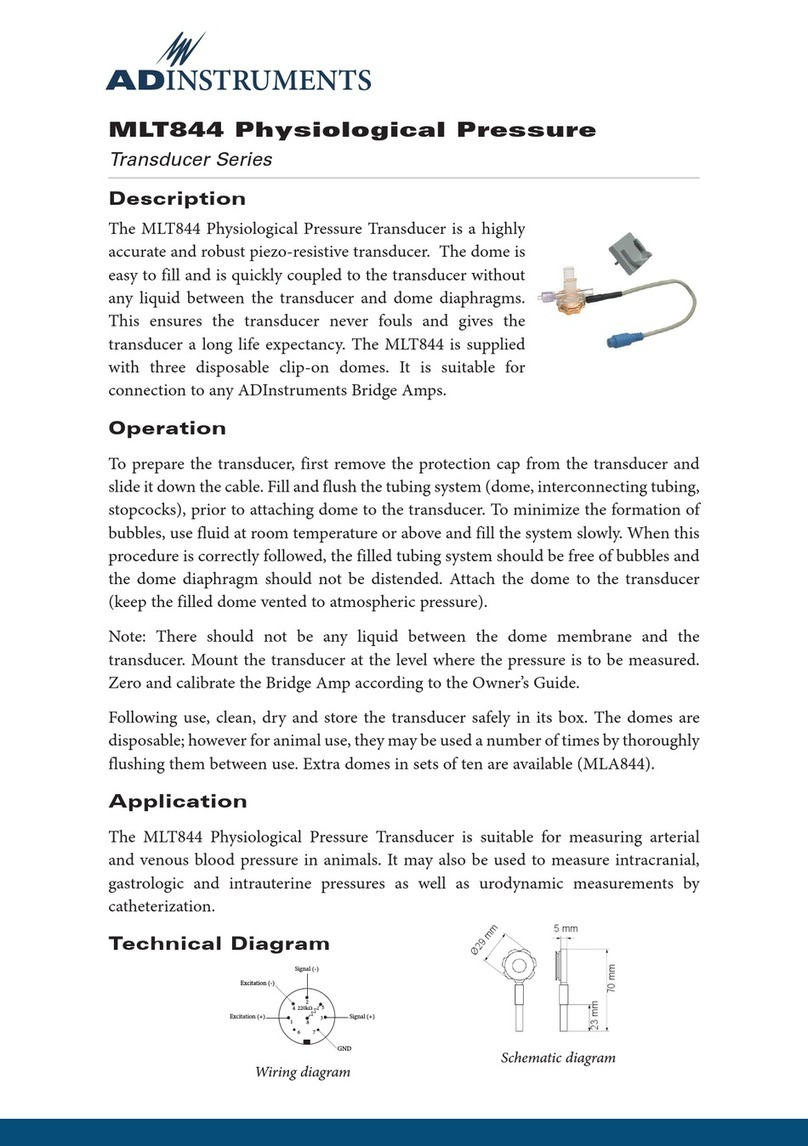
ADInstruments
ADInstruments MLT844 quick start guide

novotechnik
novotechnik Z-TF1-PO1 user manual

LEI accessories
LEI accessories FISHSTRIKE HS-WS Installation and operation instructions
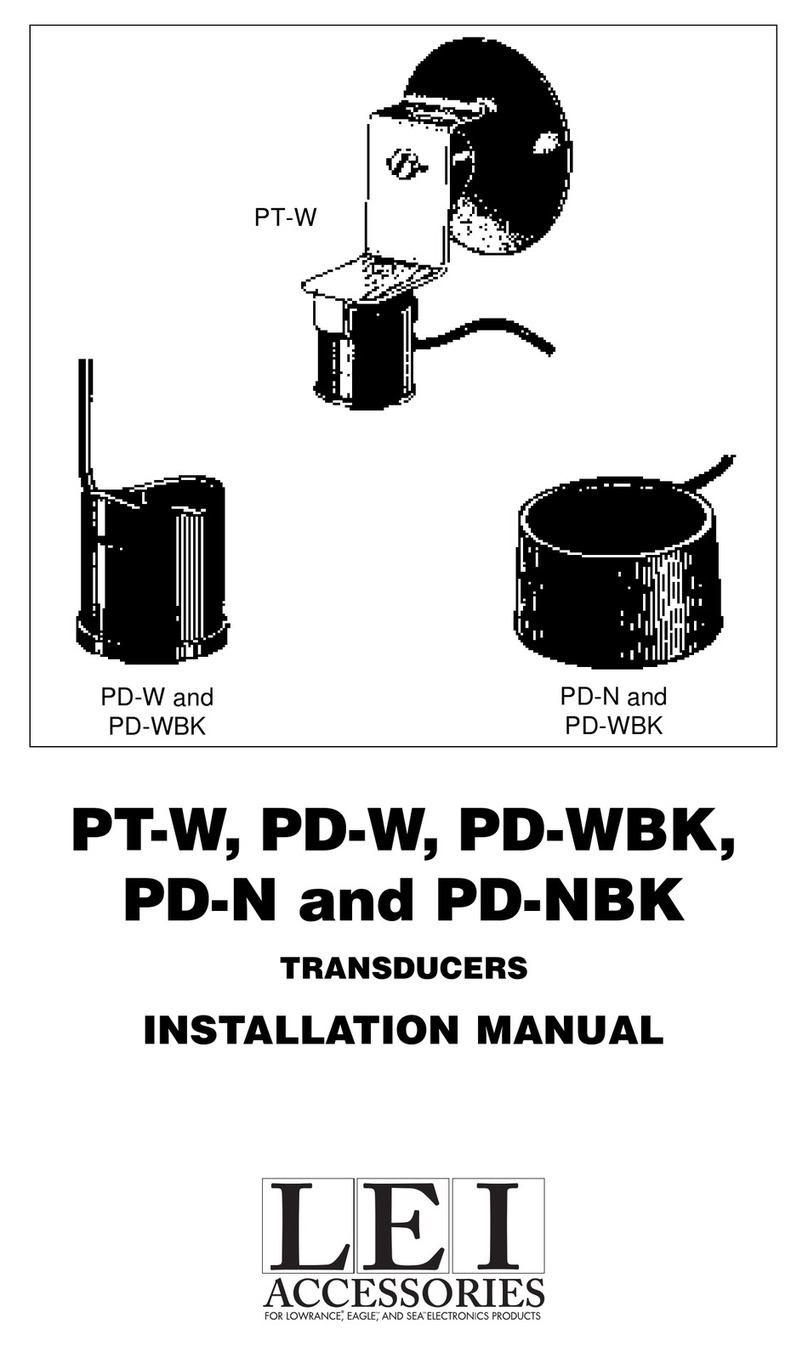
LEI accessories
LEI accessories PD-N installation manual
